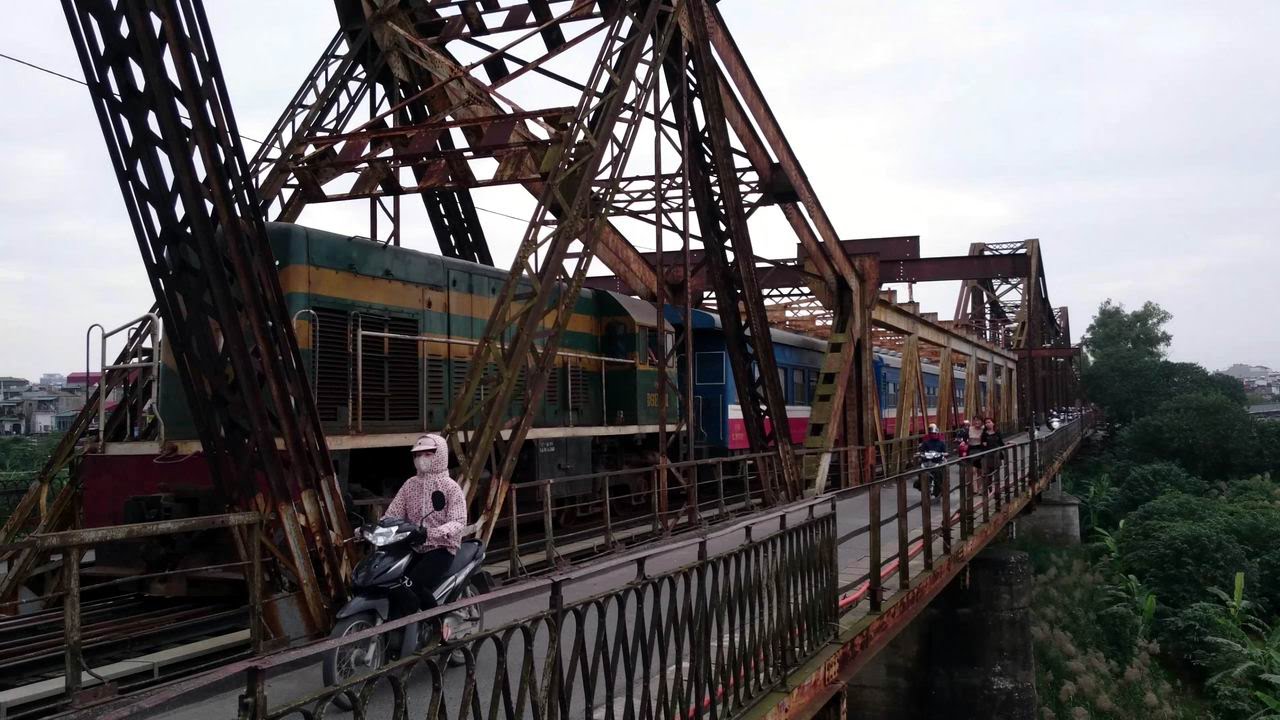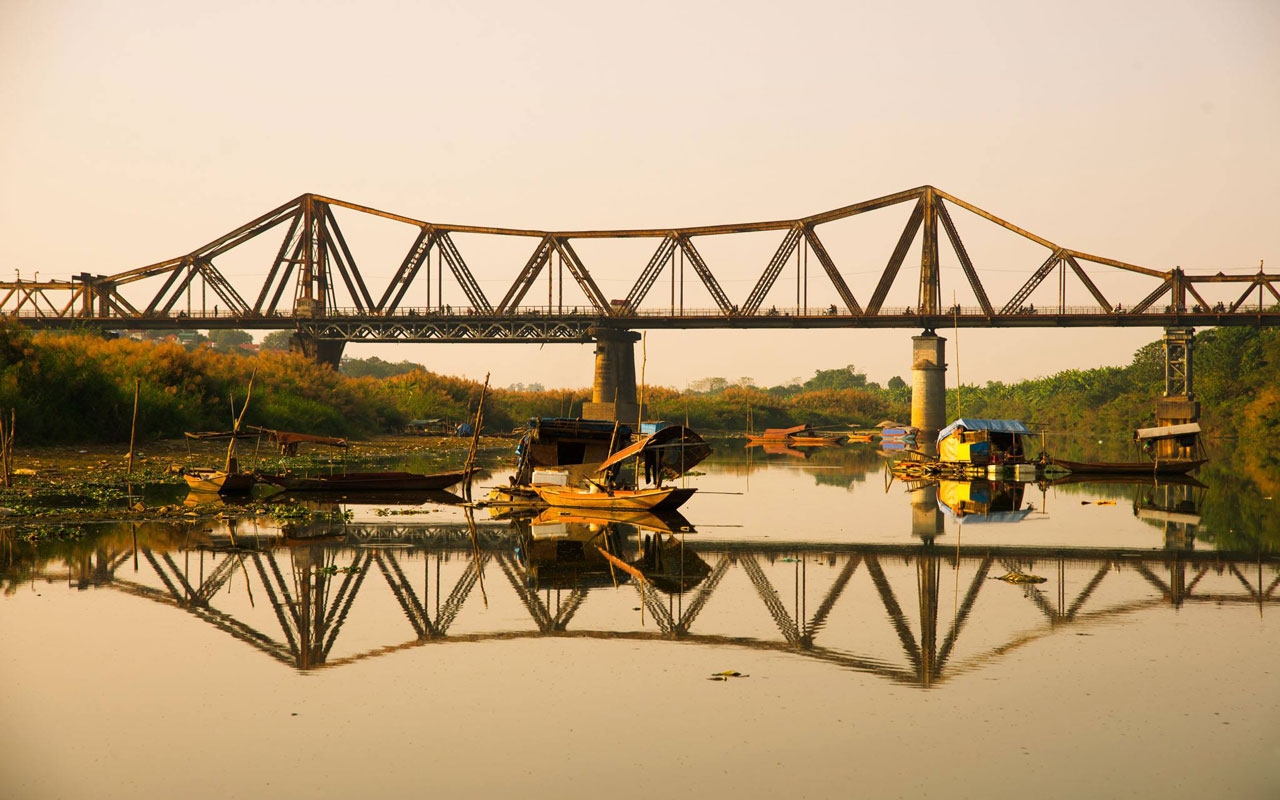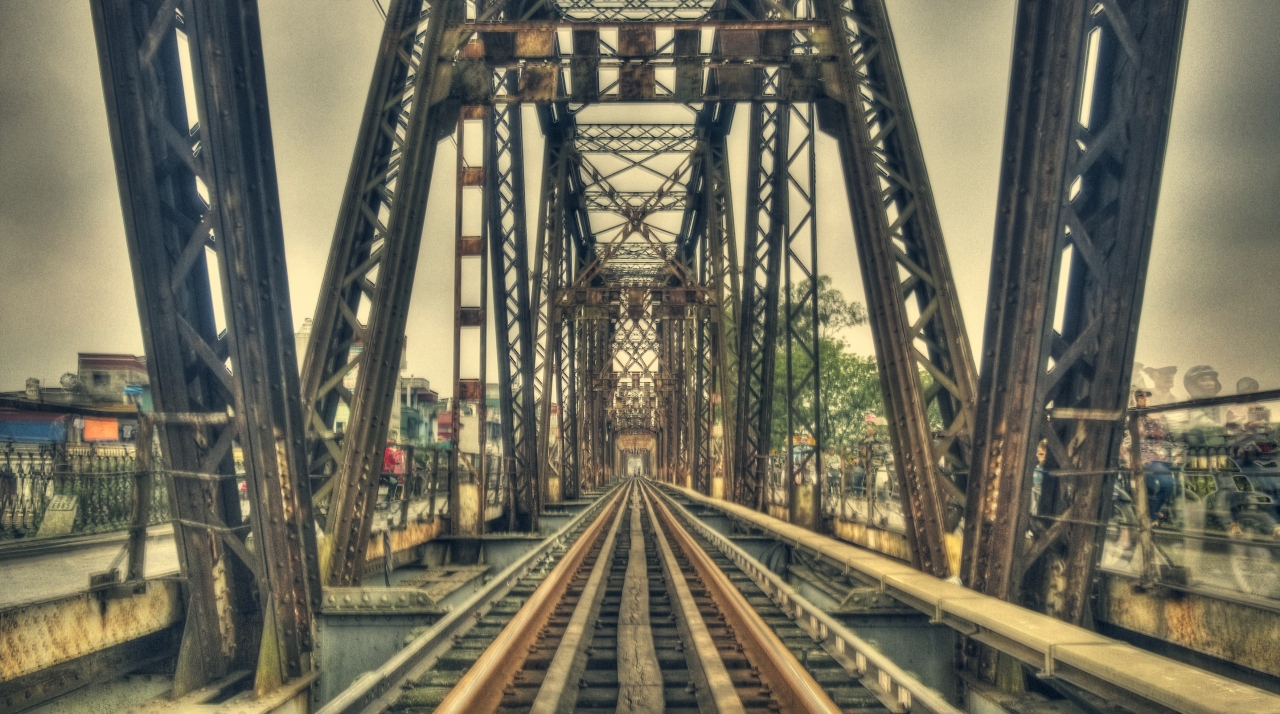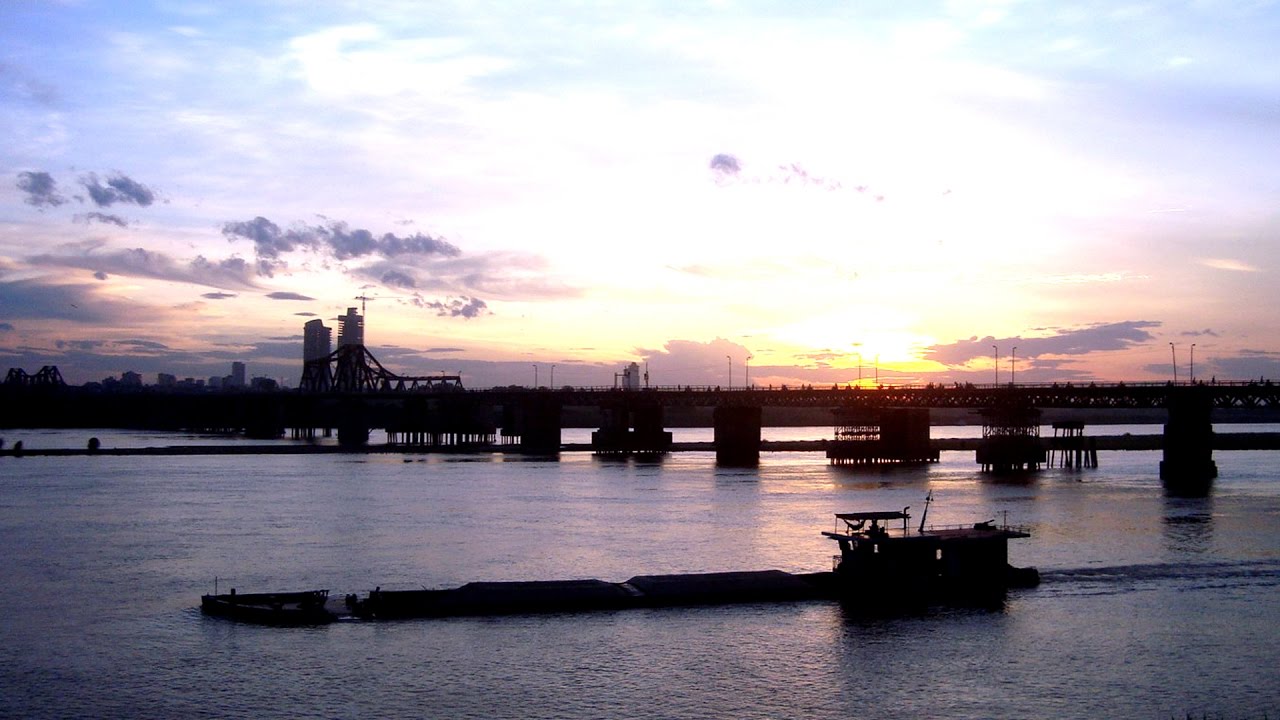
Built in the early 20th century, the Long Bien bridge has become a symbol of change in Hanoi.
Historical ups and downs
Long Bien Bridge with over 100 years of life is one of the symbols of history and technology of the early twentieth century. It was the first steel bridge across the Red River, built by the French from 1898 to 1902, on the arterial road linking Hanoi with the northern provinces.

The bridge was built when the country was under the rule of France, to meet the purpose of military, transportation, contribution for the formation of the economic triangle of Hanoi – Hai Phong – Quang Ninh, solving the travel demand. Especially, the flood season of the Red River, which is notorious for its ferocity, posed a very urgent problem for the French at the beginning of the yoke of domination.
The person who had made great contributions to the construction of the bridge this century is the Governor General of Indochina, Paul Doumer, when he took office he saw the need to have a bridge across the Red River. Although there are a number of unconvincing views on the construction of bridges of large French and indigenous officials and traders, he was determined to carry out his intentions and boldly mentioned in the Report on the first colonial exploitation program to the Minister of the French Colonies.
Long Bien Bridge was inaugurated also marked the period of Hanoi transformed from a traditional urban to the modern urban trend of the world. Thanks to the Long Bien bridge, the Hanoi after the period of the French colony had a fairly complete space structure with four basic components: the Imperial Citadel; The ancient street of the Vietnamese; French Quarter for offices and bridges opening for commodity economy.
The total length of the Long Bien bridge is about 1,862m, consisting of 19 spans, 20 pillars, a railroad in the middle, and two sides with a width of 1.3m for pedestrians. From 1902 to 1922, Long Bien Bridge mainly served the needs of railways and pedestrians. Later, due to increased traffic demand, the two sides of the road was widened for motorized vehicles.

In July 1945, Dr. Tran Van Lai, a Hanoi manager, was renamed Long Bien Bridge and this name was called to this day. Since the construction of this bridge has suffered a lot of severe consequences of natural disasters, the enemy. But as strange as it may seem, the bridge stood still for more than a century. At the most important traffic position, but it did not collapse through historic floods, breaking up of the Red River dike…. and the bombardments of the US Air Force.
Long Bien Bridge is a historical evidence witness the changes, ups and downs of the capital and also the bridge saving the memory, a soul of Hanoi, the Hanoians.
A pearl covered in dust in Hanoi
Tour in Vietnam is attractive for its contemplation and golden history. And, the Long Bien Bridge is one of these evidence of this brilliant period.
The bridge has seen so many events of the whole nation. Two prominent events in the 20th century of the Vietnamese people were the resistance war against France in 1954 for the independence for the Vietnamese people and the war fierce anti-American, although bear a lot of bombs but Long Bien bridge still stands today.
Long Bien Bridge is a pearl covered in the dust of time. On the cold winter days, the Long Bien Bridge is silent sad under the gray rain. However, in the sunset, this ancient bridge reflects the golden of the sunlight, as replaying the film of a brilliant gold Hanoi.

Looking from a distance, the Long Bien Bridge looks like an old man who is telling the story of the elegant and lovely Hanoians, about the splendor of two wars of resistance.
After the ups and downs of the time, Long Bien Bridge “taste” enough smell of bombs, but it still silently stands there and covers the capital Hanoi as a rope connecting the past with the present.
To enjoy the most beautiful sightseeings in Vietnam by your eyes, you can see some itineraries below Halong Bay Cruises – Hanoi Tours – Vietnam Tours – Sapa Tours – Package Tours – or book a private car to discover where ever you want to enjoy the Vietnamese taste
